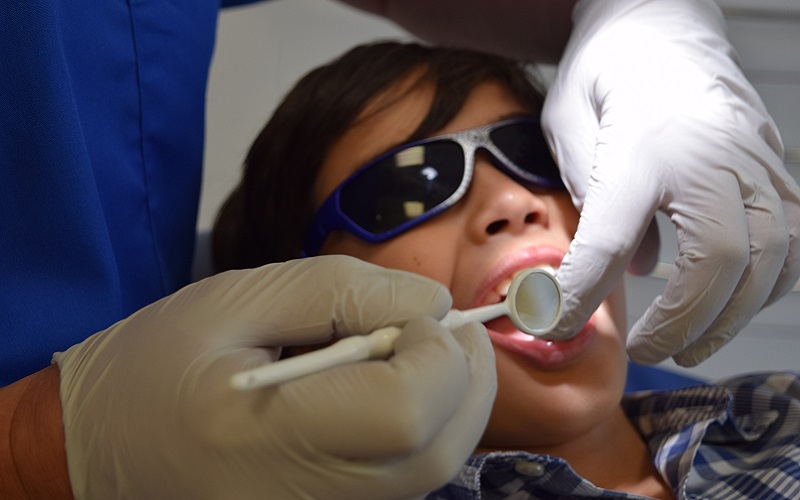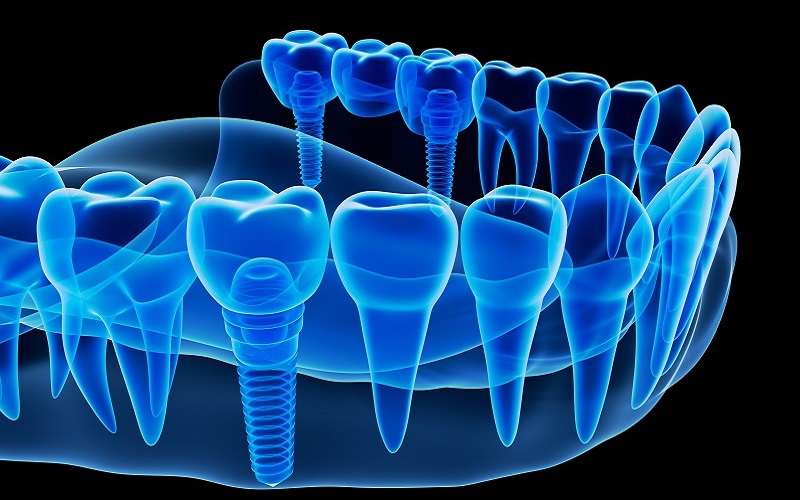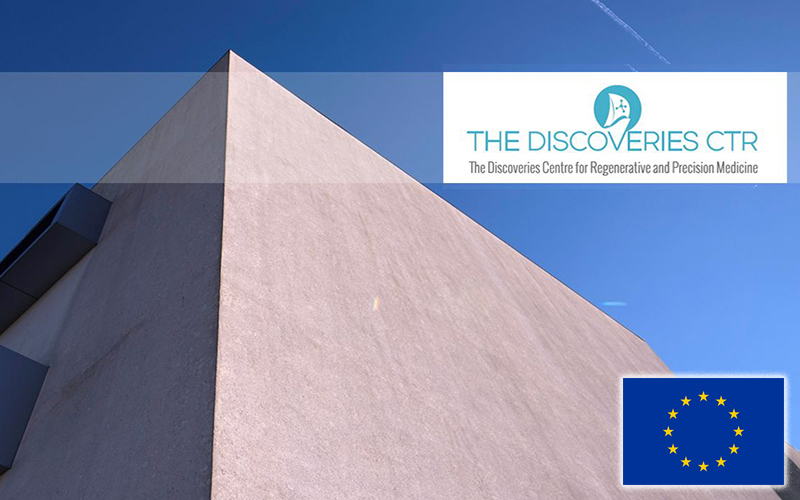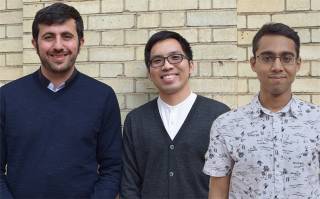Biomaterials and Tissue Engineering
Regeneration of tissue is a fundamental concept within current healthcare. Our primary aim is to restore function and appearance by the development of novel materials and strategies to control and drive the repair process. But we also want to understand and enhance the cellular environment and interaction and ensure this is also in an optimised state. Thus we have two themes that our efforts are directed towards:
Developing new biomaterials technology and tissue engineering and regenerative medicine approaches:
Work is being carried out across all materials groups from polymers, through composites to metals, to both synthesise new materials and also process into appropriate architecture. New regenerative medicine technologies draw on combinations of cell, gene and small molecular therapies. All of this knowledge is applied to address a wide range of clinical challenges and commercial opportunities. Additive manufacturing offers significant opportunities for improvement of oral health. We are investigating the technology for a multitude of uses, including development of light curable and degradable resins that can be 3D printed to give custom fit bone implants. We are also using it for more fundamental studies to allow 3D printing of cells to make organoid models which can be used not only for regeneration of tissues such as nerve tissue but also to allow 3D models to be developed which can be used for screening of new therapies.
Understanding the response of materials, cells and tissues to physical and biochemical environments:
Fundamental research is being carried out into determination of the properties of materials and tissues using a wide range of probe methodologies, and at the Eastman we have particular research strengths in mechanical testing, microscopy methods, including SEM, TEM, AFM, confocal, fluorescence and chemical imaging. All of this fundamental knowledge feeds back into our applied and translational strategies.
- Staff
- Professor Jonathan Knowles BSc(hons), PhD, FIMMM, CEng, FRSC, Csci
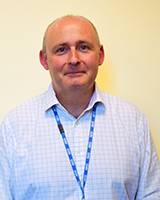
Head of Biomaterials and Tissue EngineeringAreas of interest: My research is mainly focussed on degradable materials to regenerate hard and soft tissues lost through disease or trauma. My work takes a multiprobe approach to understand structure-property relationships to optimise the endpoint requirements. Find out more
Recent paper: G. Owens, R.K. Singh, F. Foroutan, M. Alqaysi, E-J. Lee, C-M. Han, C. Mahapatra, H-W. Kim and J.C. Knowles (2016) “ Sol-gel Based Materials for Biomedical Applications” Progress in Materials Science, Vol.77C, p1-79.
Dr David Chau BEng, MSc, PhD, CEng, CSci, MIChemE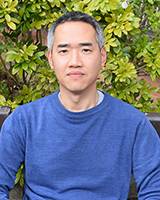
Associate Professor in Biomaterials and Allied SubjectsAreas of interest: Biomaterials and composites for matrix engineering and biotechnology and translational Science including advanced drug delivery systems, (bio)pharmaceutics and novel dosage design forms. Find out more
Recent paper: Shafaie S, Hutter V, Brown MB, Cook MT, Chau DYS. 2018. Diffusion through the ex vivo vitreal body - Bovine, porcine, and ovine models are poor surrogates for the human vitreous. Int J Pharm. 550(1-2):207-215
Dr Linh Nguyen BSc, MEng, PhD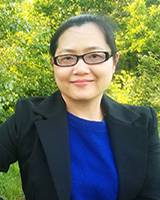
Lecturer in Biomaterials and Allied SubjectsAreas of interest: New biomaterials for oral and dental tissue engineering; drug delivery systems for bone tissue engineering; thermo-responsive polymer based macro-carriers for stem cell expansion and harvesting. Find out more
Recent paper: Linh T. B. Nguyen, Akinlolu Odeleye, Chih–Yao Chui , Hua Ye* and Zhanfeng Cui (2019). Development of thermo-responsive polycaprolactone macrocarriers grafted with Poly(N-isopropyl acrylamide) for cell culture, Scientific Report, 9, 3477.
Dr Alessandro Poma MSc, PhD, MRSC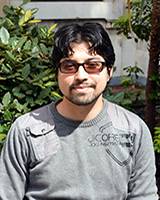
Lecturer in Biomaterials and Allied SubjectsAreas of interest: New structural and functional materials, with particular emphasis on nanoparticles and imprinted polymers; drug delivery and tissue engineering methodologies; the development of functional imprinted matrixes capable of driving healing in case of injury, trauma or disease. Find out more
Recent paper: Dr. Yunqing Zhu Dr. Alessandro Poma et al (2019). Metabolically Active, Fully Hydrolysable Polymersomes, Angewandte Chemie (International ed. in English), Volume 58, 2019, Pages 4581-4586
Professor Anne Young PhD Polymers, BSc Chemistry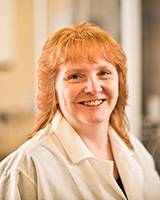
Professor of BiomaterialsAreas of interest: (i) Therapeutic, Adhesive, Remineralising, Antibacterial Composites for Tooth and Vertebral Repair (ii) Drug-Releasing Degradable Calcium Phosphate Cements and Composites for Bone Repair. Find out more
Recent paper: Aljabo, A., Abou Neel, E. A., Knowles, J. C., & Young, A. M. (2016). Development of dental composites with reactive fillers that promote precipitation of antibacterial-hydroxyapatite layers. Materials Science and Engineering C, 60, 285-292. doi:10.1016/j.msec.2015.11.047
- Facilities
The BTE Department offers a wide range of materials and cell characterisation facilities. Staff are happy to discuss collaborative research measurements with both internal and external users. For further information contact Professor Jonathan Knowles. Facilities include:
ATR FTIR
Confocal Laser Scanning Microscopy
Differential Scanning Calorimetry
Dynamic Mechanical Analysis
Fatigue Testing
Flow Cytometry
Goniometry
High Performance Liquid Chromatography (HPLC)
Inductively Coupled Plasma Mass Spectrometry ICP-MS
Ion Chromatography
Leica DMIRB Inverted Fluorescence Microscope
Raman And FTIR Mapping
Real time quantitative PCR and allele discrimination
Scanning Electron Microscope
Transmission Electron Microscope
UV-Visible Spectroscopy
X-Ray Diffraction
Find out more about the above.- All current PhD projects
1. Biomaterials and composites for matrix tissue engineering
Project titles:
- 3D Bioprinting for custom fit maxillofacial implants using new degradable polymers
- Bioprinting of functional tissue constructs in 3D: Use of hydrogels for assembly of complex tissues
- Degradable microcarriers for stem cell expansion and formation of new hard tissue organoids
- Degradable glass fibres for the regeneration of muscle and ligament
- Repair of nerve tissue injuries using degradable glass fibres as guidance cues.
- Synthesis of nanoparticles for cancer dual and controlled drug release for cancer therapy
- Development of phosphate based sol-gel glasses for therapeutic use
Supervisor: Professor Jonathan Knowles
2. Injectable, antibacterial, remineralising materials for tooth and bone repairProject titles:
- Self-adhesive, re-mineralising, antibacterial dental restorative materials dental restoration, methacrylate, calcium phosphate, antibacterial release / action Supervisor: Professor Anne Young / Dr Paul Ashley
- Replacement of PMMA bone cement with a modified dental composite polymethylmethacrylate (PMMA), bone cement, dental composite, strength, antibacterial Supervisor: Professor Anne Young / Dr Lambis Petridis
- Degradable composite bone cement development calcium phosphate, degradable polymers, bone cement, drug release Supervisor: Professor Anne Young
3. Prosthodontics
Project titles:
- The influence of implant-abutment corrosion products on cell metabolic pathways implant abutment, dental implants, corrosion, peri-implantitis, bone loss Supervisor: Dr Lambis Petridis / Professor Jonathan Knowles
- Antimicrobial coatings for intraoral prostheses intraoral prostheses, Candida, MRSA, antibacterial, coatings Supervisor: Dr Lambis Petridis
In collaboration with the Prosthodontics Department and the Microbial Disease Team
4. Novel diagnostics for oral tissue defects and lossProject titles:
- Nano-Histology of collagen tissues affected by rare syndromes using atomic force microscopy
- Evaluation of Optical Coherence Tomography as a diagnostics tool for dentistry and its applications to enamel and soft tissues defects or loss
Supervisors: Dr Laurent Bozec, Dr Susan Parekh, Dr Francesco D’Aiuto
 Close
Close


